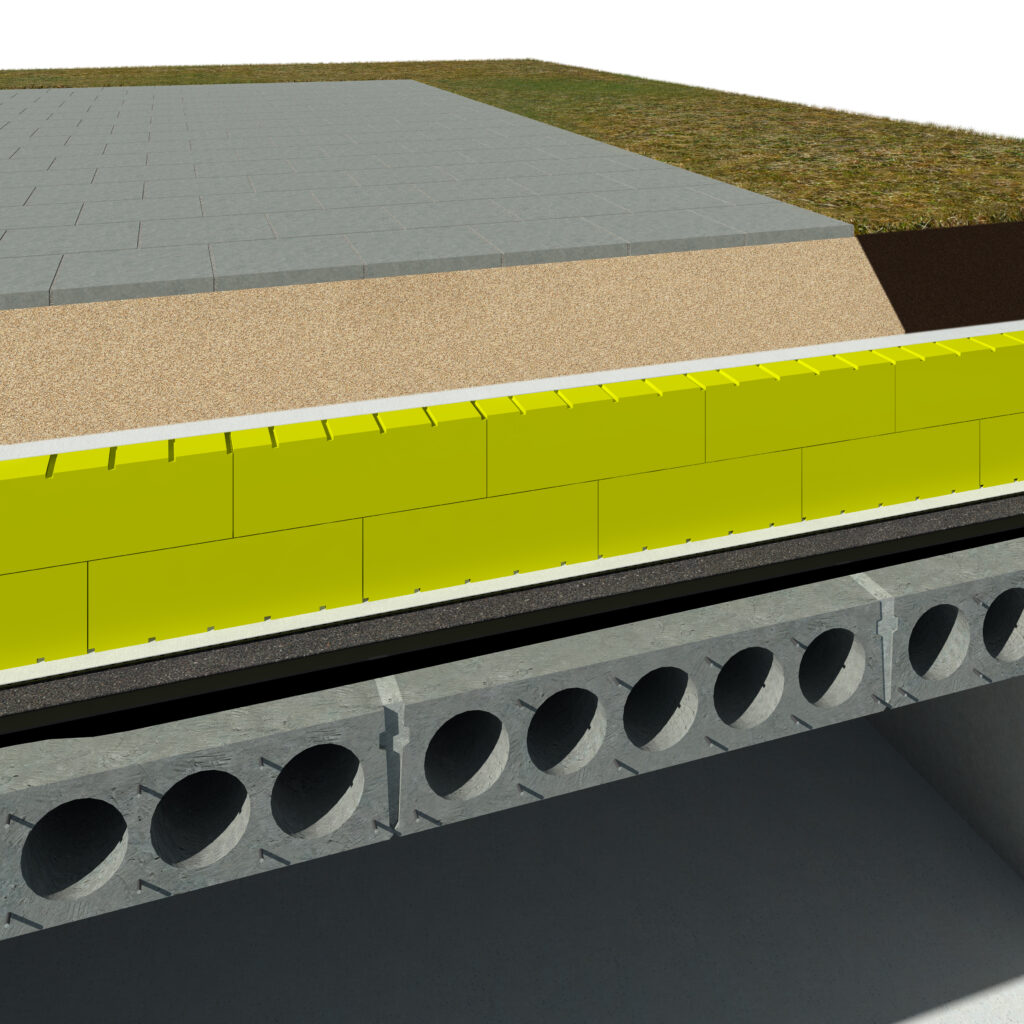Inverted Roofs

Inverted roofs are one of the most challenging applications for thermal insulation products, as the structure will always have moisture in the form of both water and water vapor, large pressure differences, frost stress when wet, and a certain degree of load. Parking areas on the roofs of shopping centers, roof terraces, and green roofs are among the most common inverted roof structures. Depending on the application, the surface structure on top of thermal insulation will consist of poured concrete, coarse aggregate, fine aggregate and tiling, or dirt/soil and ground vegetation.
Surface structures and drains on inverted roofs are designed such that rainwater is primarily removed from the surface through roof outlets. Any moisture that reaches the insulation layers is removed through subsurface drain mats on top of the thermal insulation and the actual waterproofing layer. Fluted FINNFOAM URA insulation panels are placed on top to ensure that moisture is removed effectively. This ensures that the thermal insulation layers are kept as dry as possible. For effective removal of water, the joints between insulation panels should not be sealed with a urethane foam. The insulation panels are installed tightly against each other in a butt joint.
In addition to the usual tests, the requirements specified for products used for inverted roofs according to ETAG 031 include freeze-thaw-resistance testing, water absorptivity with diffusion, and long-term compressive strength, i.e., compressive creep test for a period of utilization of at least 25, but preferably 50 years. These tests are used to verify the longevity of the utilized products and that their thermal insulation properties remain unchanged in demanding conditions. The tests are the most stringent ones in use and have all been conducted on FINNFOAM, proving that its thermal insulation and compressive strength properties remain unchanged.

Today, our technical support is also often approached with questions regarding the use of FF-PIR polyurethane insulation products in inverted roof structures. Polyurethane is not the right material for applications where the product is subjected to moisture stress. The reason for this is that polyurethane is always partially open-celled, and the cell structure is very glass-like. Additionally, its long-term compressive strength (approx. 2 metric tons/m2) is relatively low, which allows it to gather water under moisture stress and thus prevents the structure from working as designed.
The ETAG 031 for inverted roofs also does not consider PU insulations as a suitable material, as the applications of polyurethane include dry, i.e., regular wall and ceiling structures. For inverted roofs, the one and only product with suitable longevity is XPS, i.e., FINNFOAM, which has also passed all the above tests required by ETAG 031.







